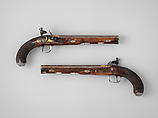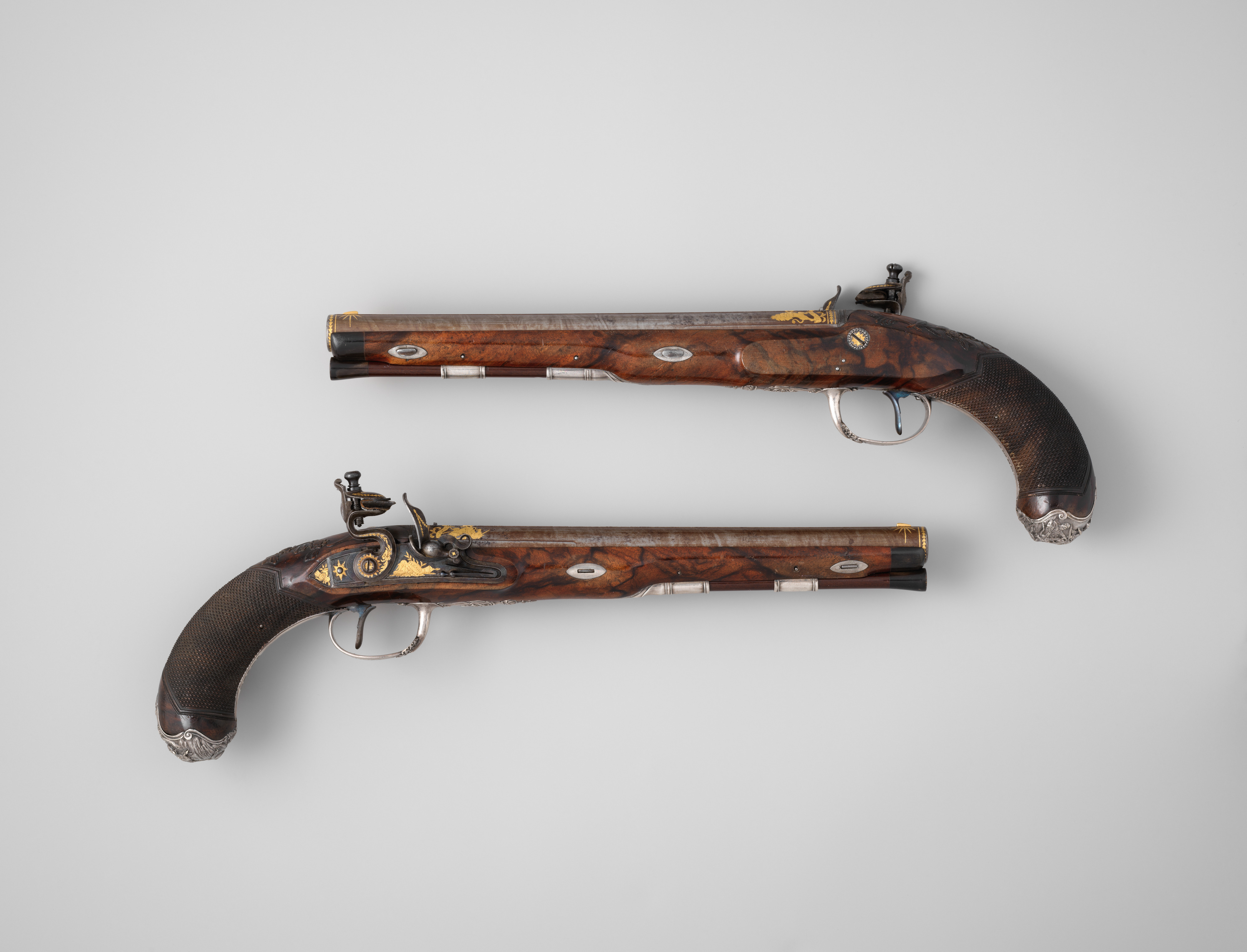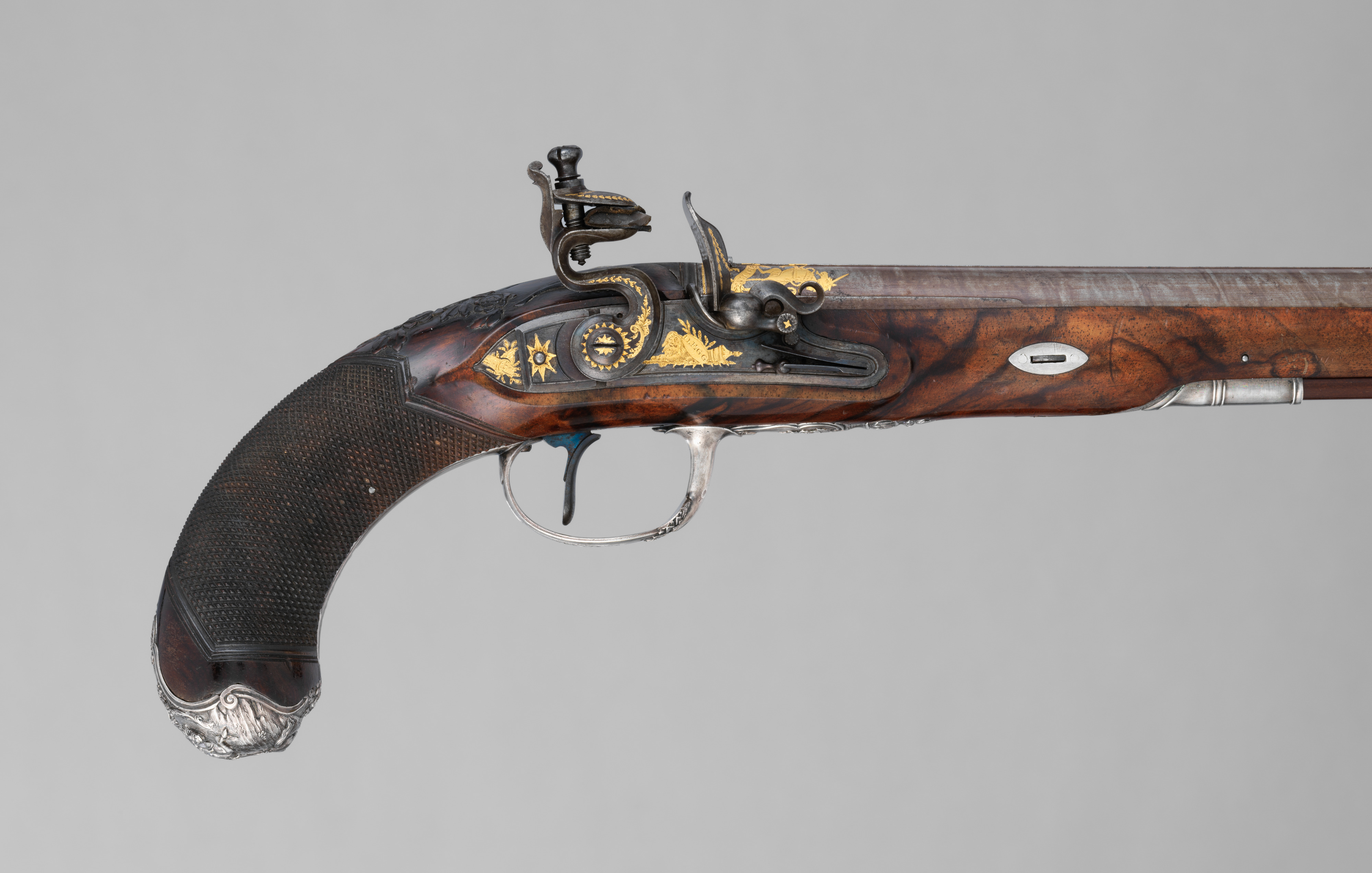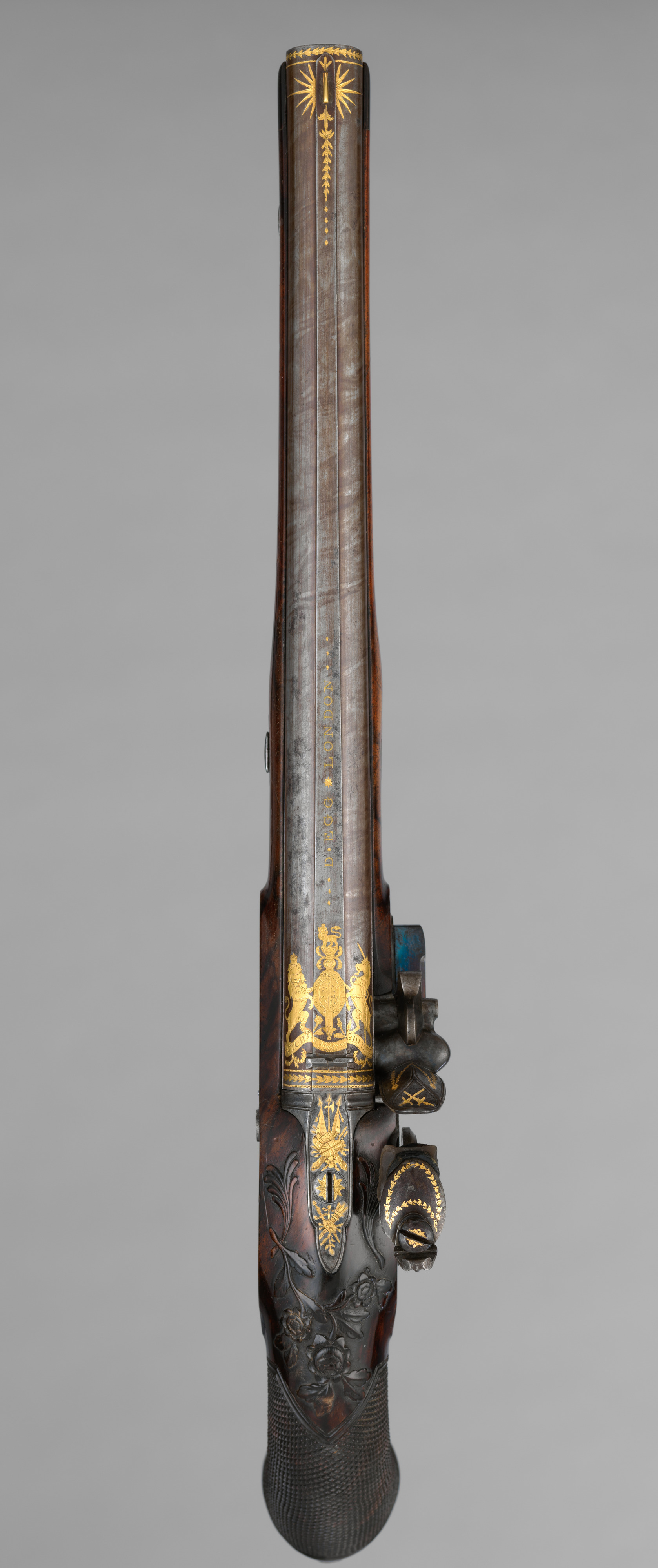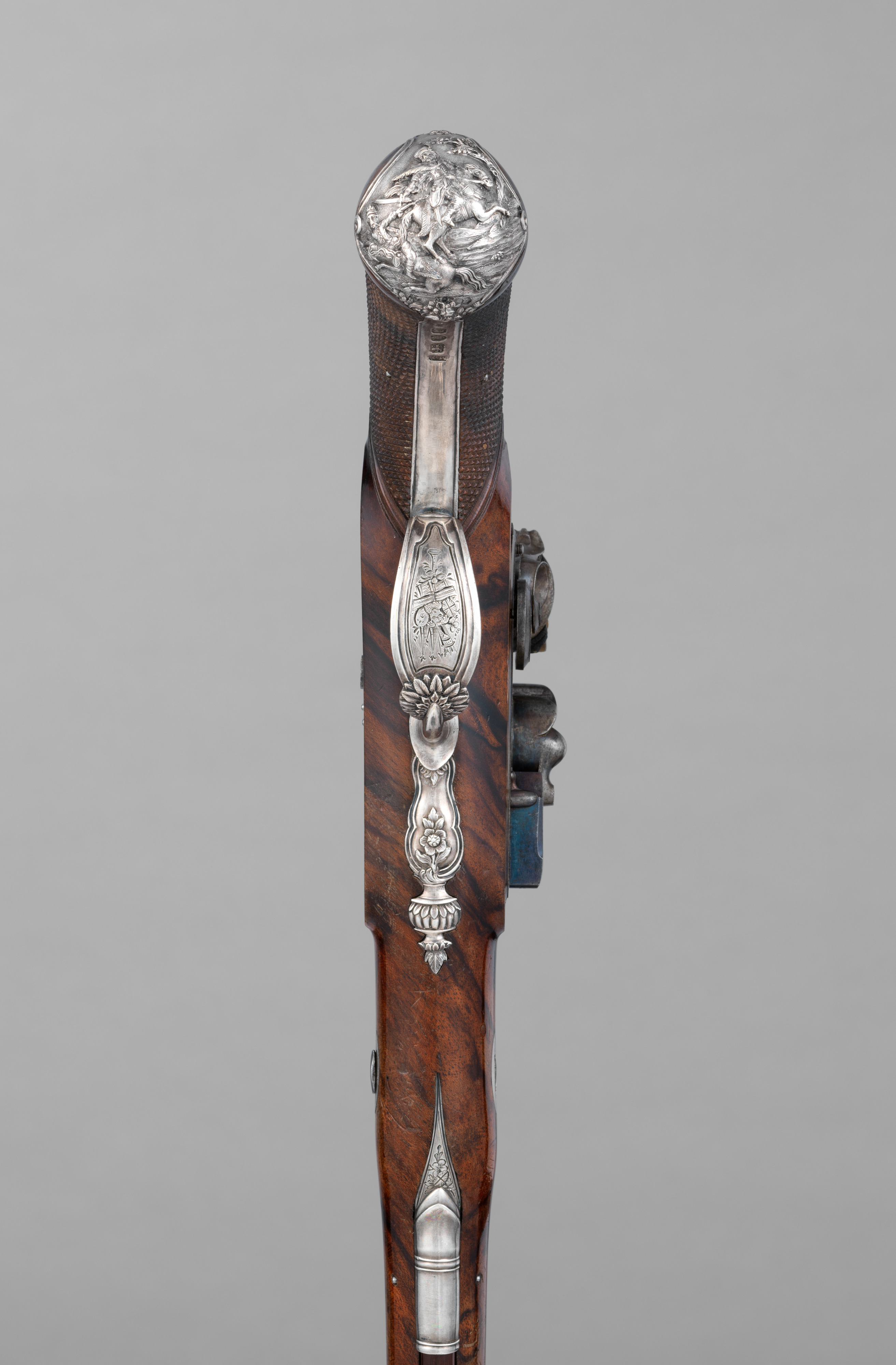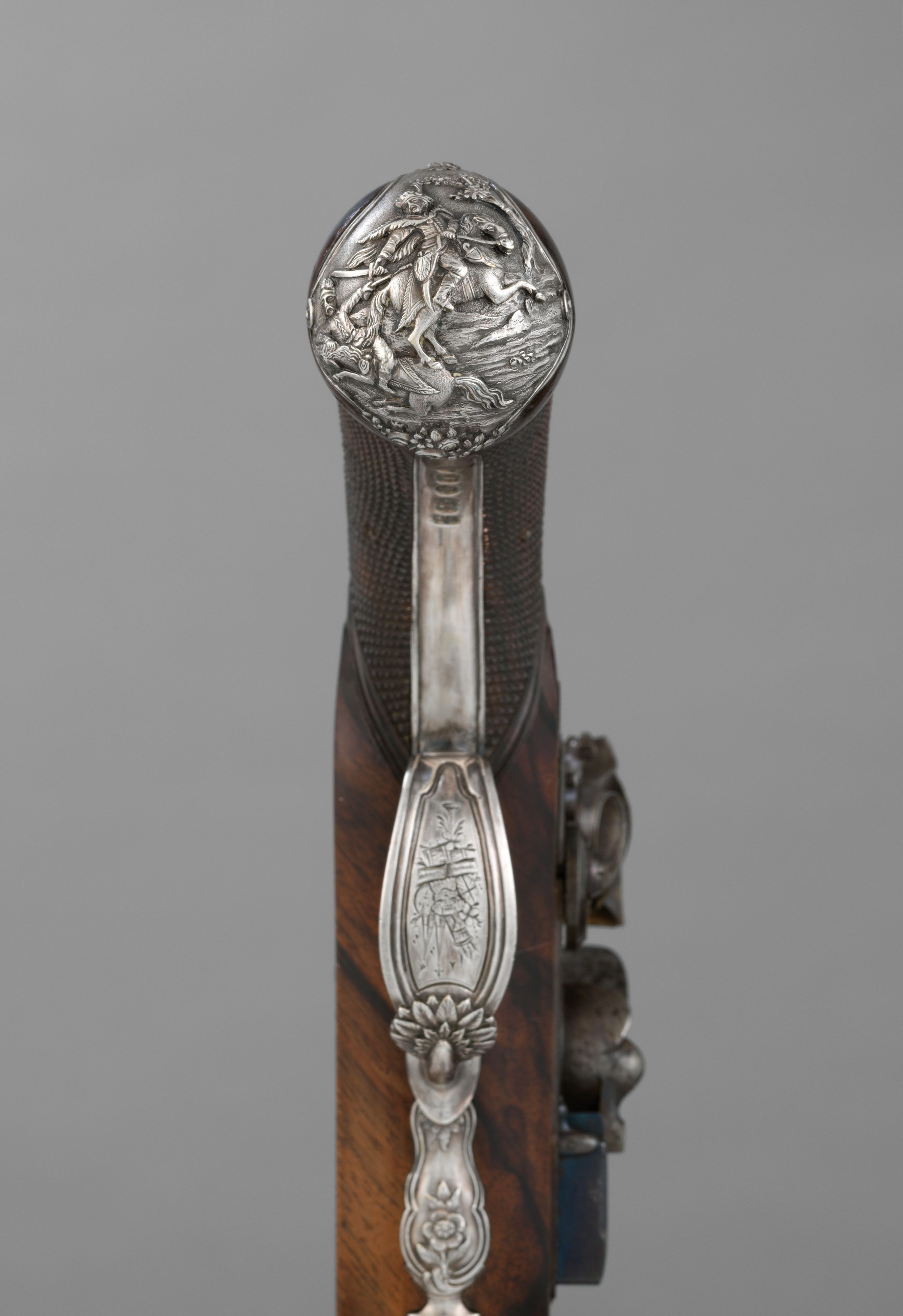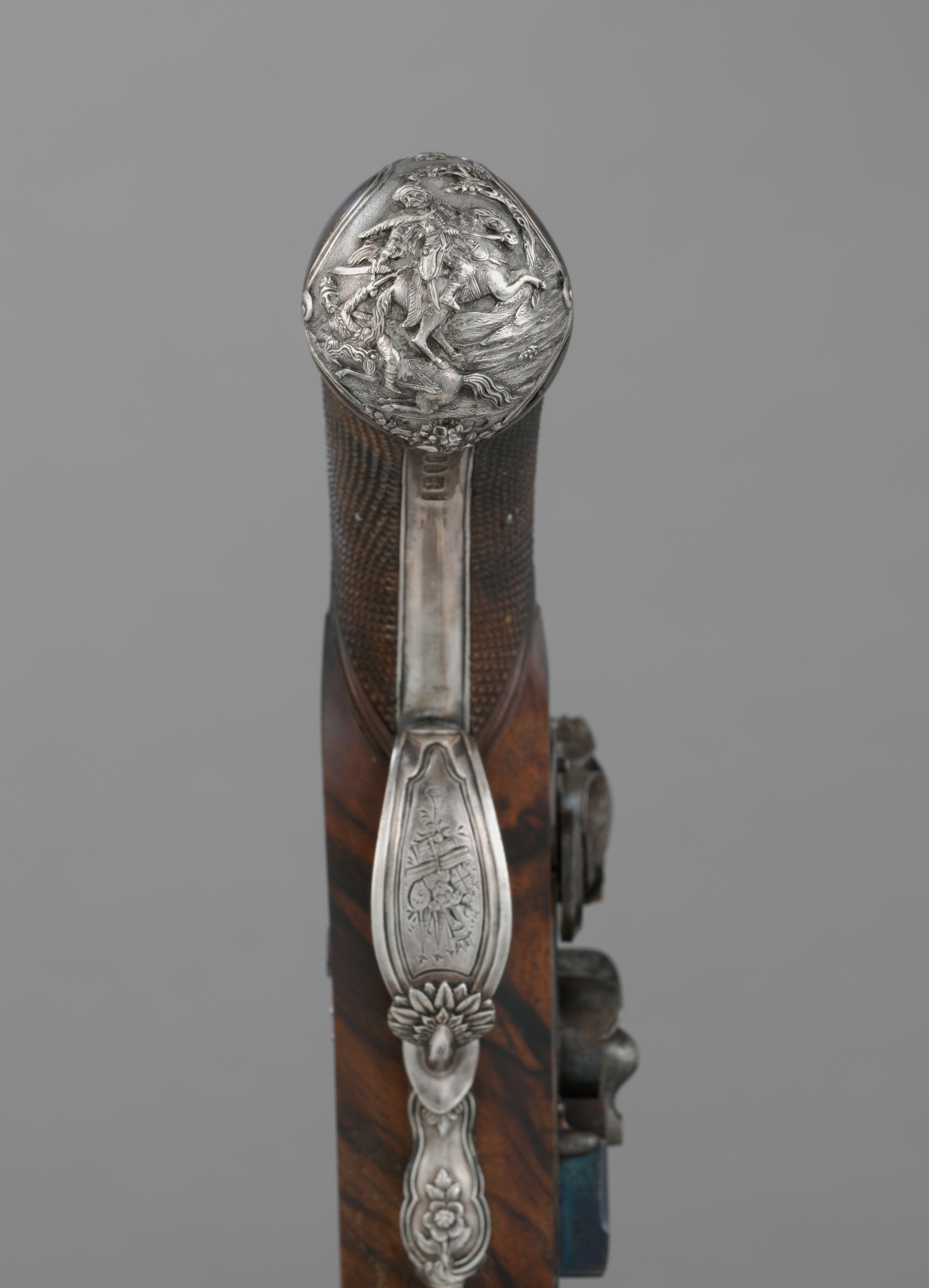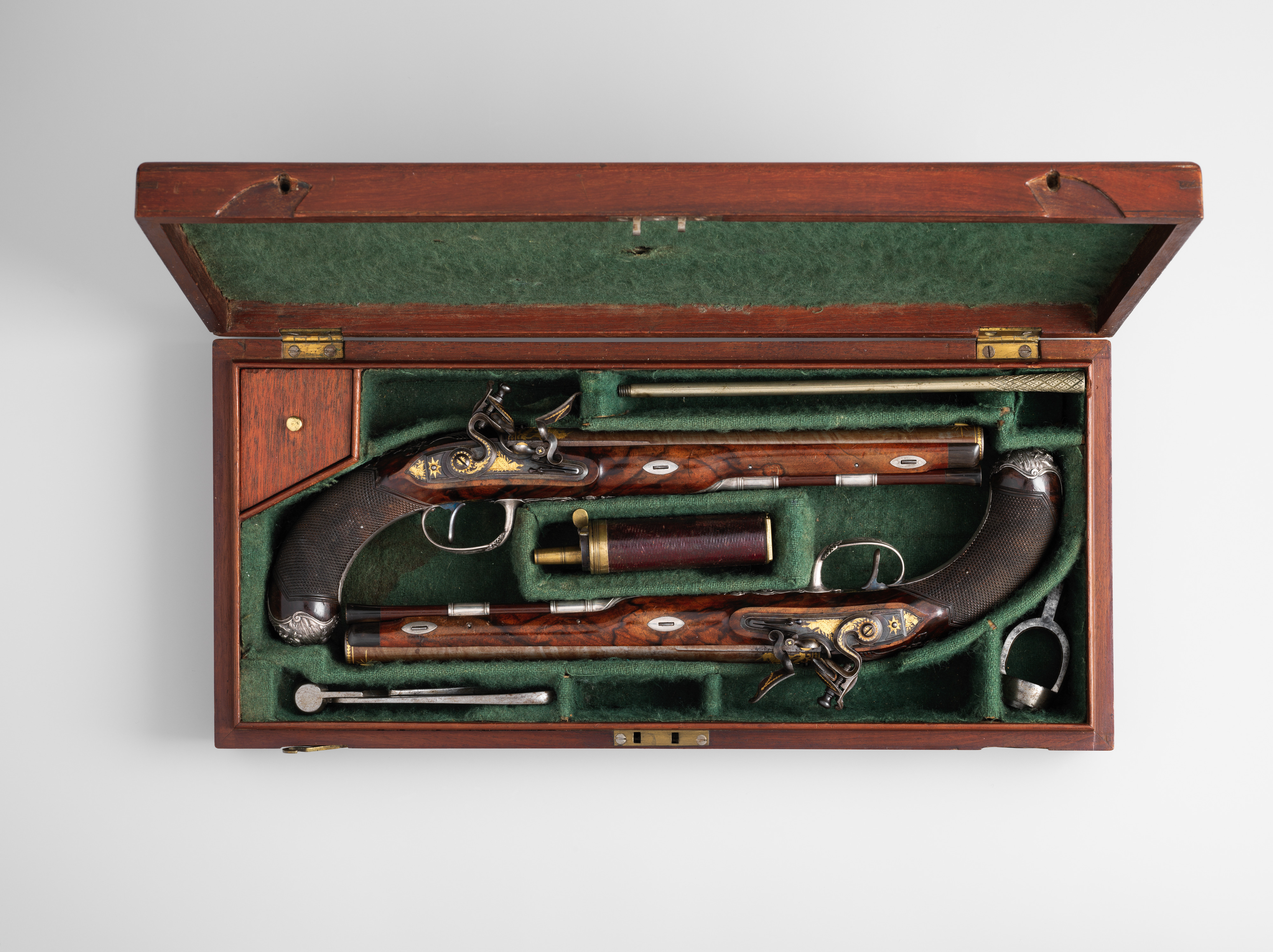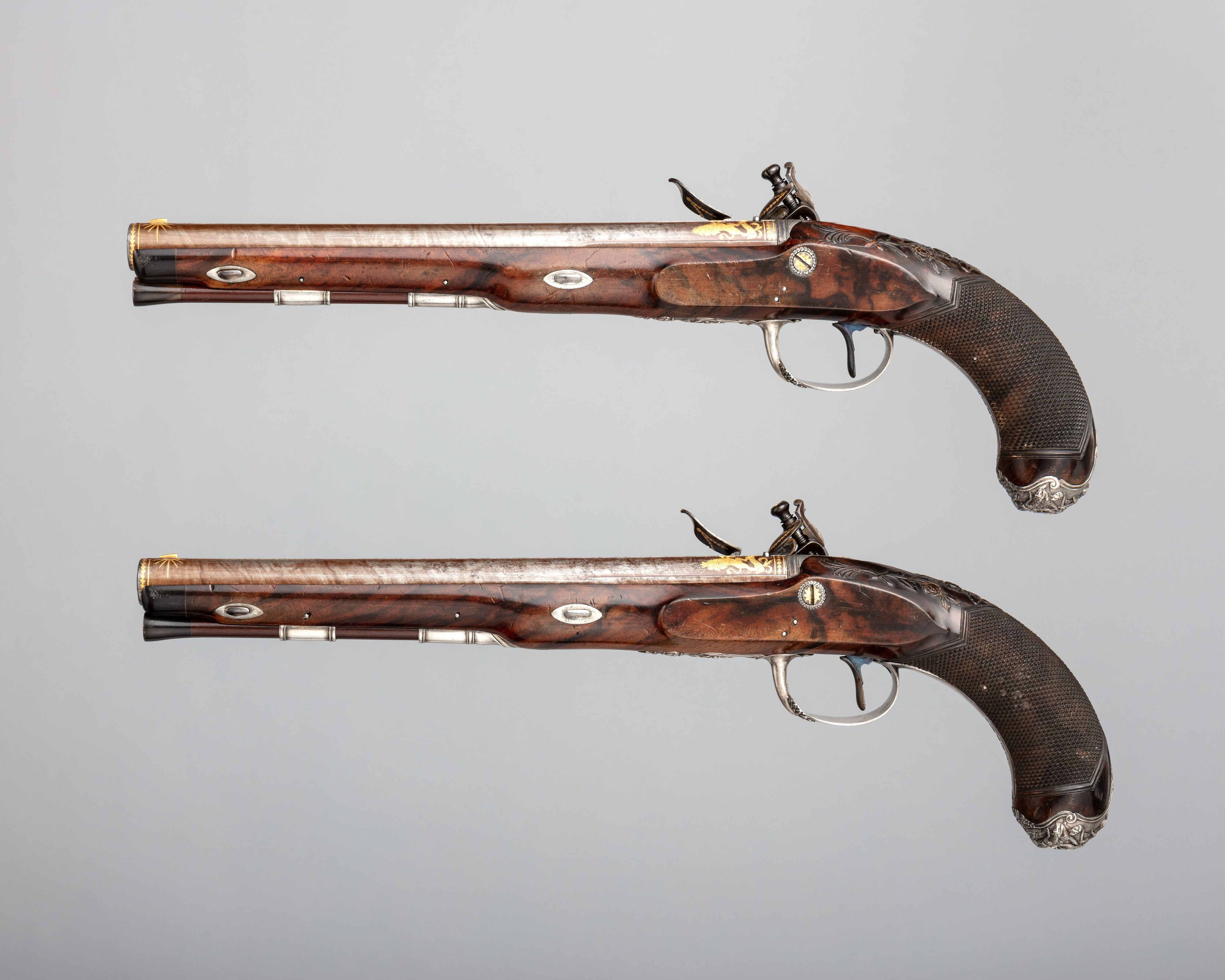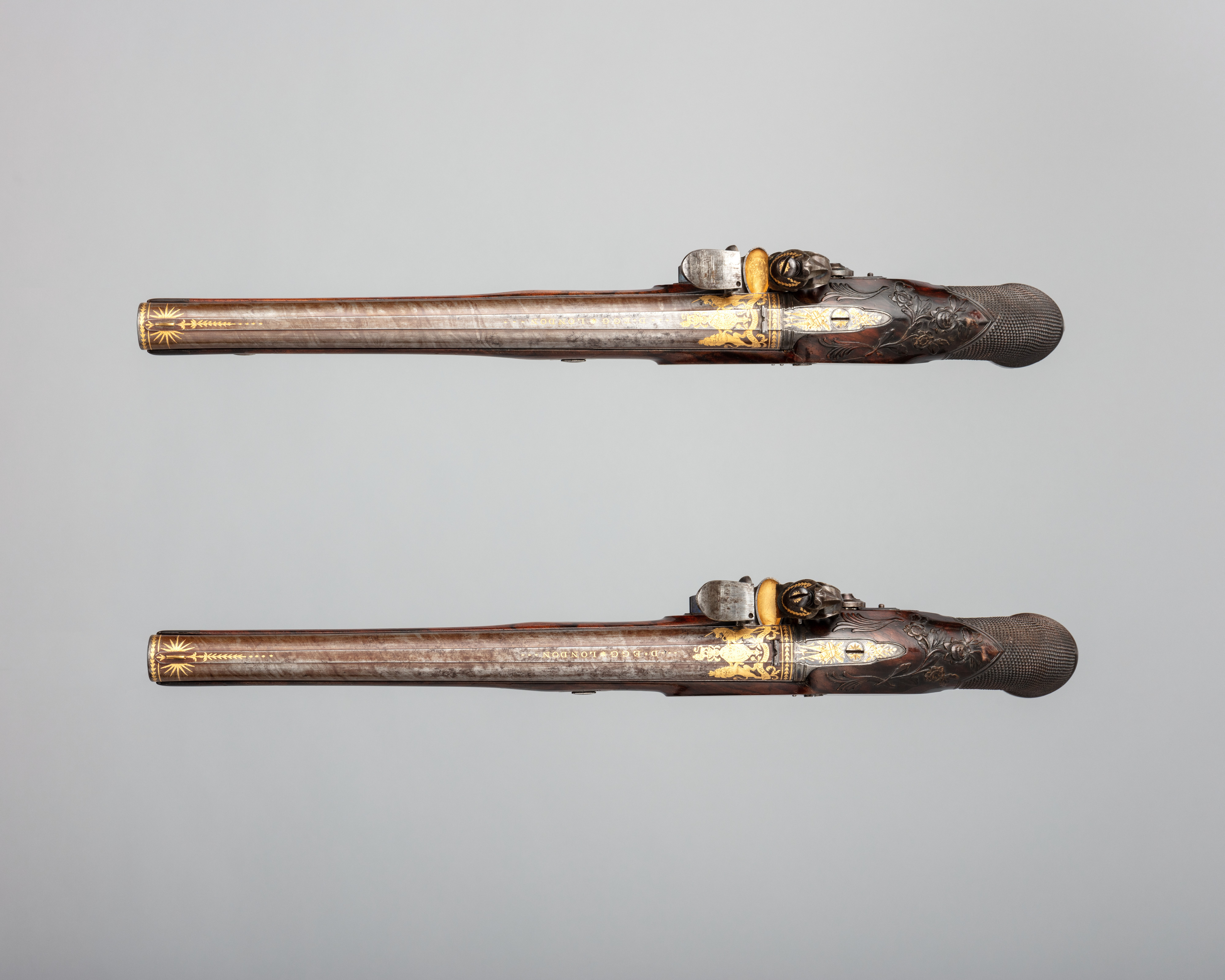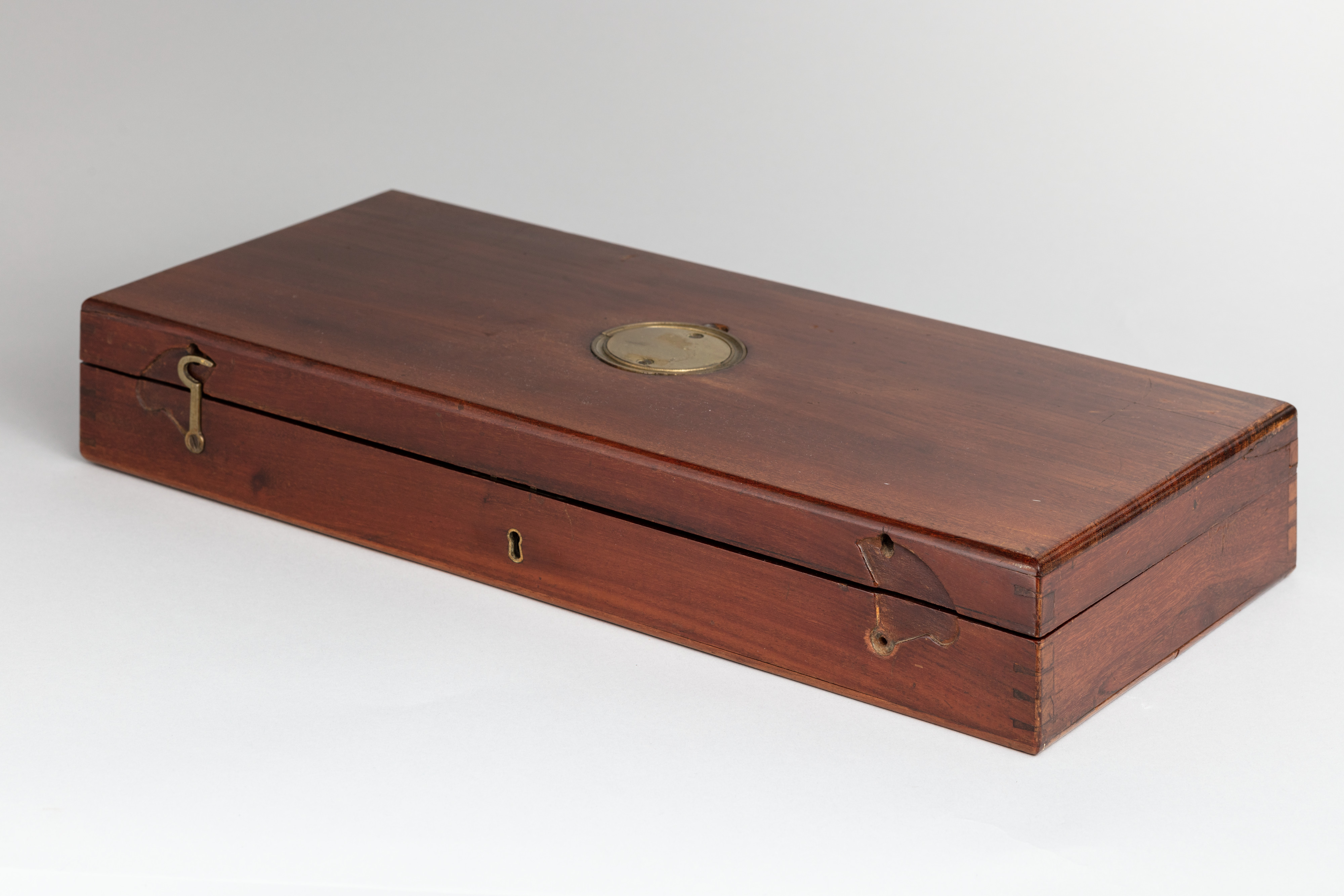Pair of Flintlock Pistols of the Prince of Wales, later George IV (1762–1830), with Case and Accessories
Gunsmith Durs Egg Swiss
Silversmith Michael Barnett British
Not on view
Tastefully embellished with low-relief silver pommels depicting a cavalry combat scene, gold-inlaid barrels and locks displaying the royal arms, and luxuriously carved, figured walnut stocks, these pistols were made for George IV when Prince of Wales (1762–1830) by Durs Egg, one of the most talented and influential gunmakers of his era. The pair exemplifies Egg’s finest work.
Egg’s workshop produced the pistols for the Prince just as Egg was reaching the peak of his career. Though fully functional for the purposes of dueling and self-defense, with light, easily maneuverable barrels, fast locks, set triggers, and ergonomically rounded, checkered stocks for enhanced grip, the pair’s decorations suggest their intended use was for less dramatic activities, particularly target shooting.
The set is emblematic of the prince’s lifelong interest in collecting contemporary and antique firearms and other weapons from across Europe, Asia, and the Middle East, which he initially kept at his palatial London home, Carlton House (demolished in 1827). An avid sportsman and hunter, the prince spent huge sums commissioning firearms from the premier London gunmakers—a habit that contributed to his accumulation of massive debts that eventually necessitated a government bailout. For his part, Egg produced a wide variety of firearms for him—from sporting guns to multi-barreled pistols—and in his nearly fifty years under royal patronage, Egg fulfilled more royal commissions than almost any other gunmaker. He also regularly repaired and modified the prince’s firearms.
The similarity of the Museum’s pair to several pistols by Egg now in the Royal Collection at Windsor suggests that it may have once belonged to a larger set or series commissioned by the prince in the late 1780s. These related firearms include a pair of octagonal-barreled dueling pistols (acc. no. RCIN 67191) and a pair of double-barreled pistols (acc. no. RCIN 61166). Additional firearms at Windsor also appear to relate and are the focus of ongoing research (acc. nos. RCIN 61082, 61083).
London emerged as a leading center of gunmaking in Europe in the last quarter of the eighteenth century, with gunmakers in the city developing and championing a unique style of firearm distinguished by its sober aesthetic, elegance, and prioritization of performance and mechanical excellence over ornamentation. This design formula, refined over the second half of the century and driven by the particular demands of the British sporting aristocracy for elegant, quick, mechanically impeccable firearms for recreation and protection, broke from centuries of Continental European decorative tradition. It also brought about London’s ascension to the status of a leading gunmaking center in Europe by the 1780s.
Egg played a key role in evolving and perfecting this style and he was celebrated particularly for the excellence of his locks, his capacity for technological invention, and the tight overall finish of his work. For his wealthiest clients, particularly the Prince of Wales, Egg and other royal gunmakers did not hesitate to loosen their decorative parameters to satisfy the Prince’s desire to combine technical perfection with beautiful ornament.
The son of a Swiss gunmaker, Durs Egg immigrated to England from Switzerland around 1768 and started his own business in London in 1772. He secured the patronage of Prince of Wales by at least 1782 and for much of the remainder of his career enjoyed a steady flow of orders for best-quality sporting guns and pistols from the prince and other members of the royal family, as well as other English nobles, earning fame throughout Europe. At the same time, Egg maintained lucrative contracts with the Board of Ordnance and the East India Company for which he produced military arms. He amassed considerable wealth, affording him an estate in Knightsbridge and a large shop near Piccadilly Circus.
Due to rights restrictions, this image cannot be enlarged, viewed at full screen, or downloaded.
This artwork is meant to be viewed from right to left. Scroll left to view more.
